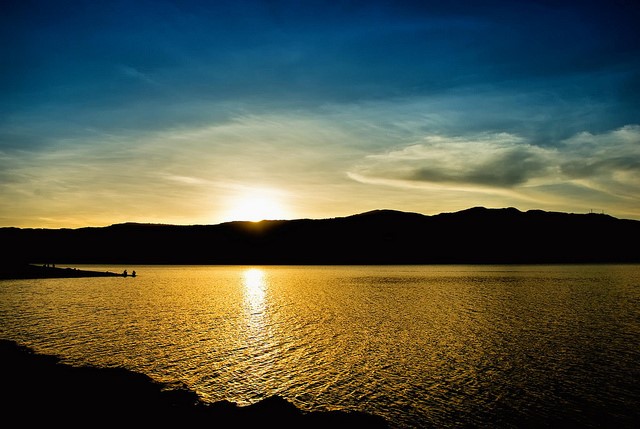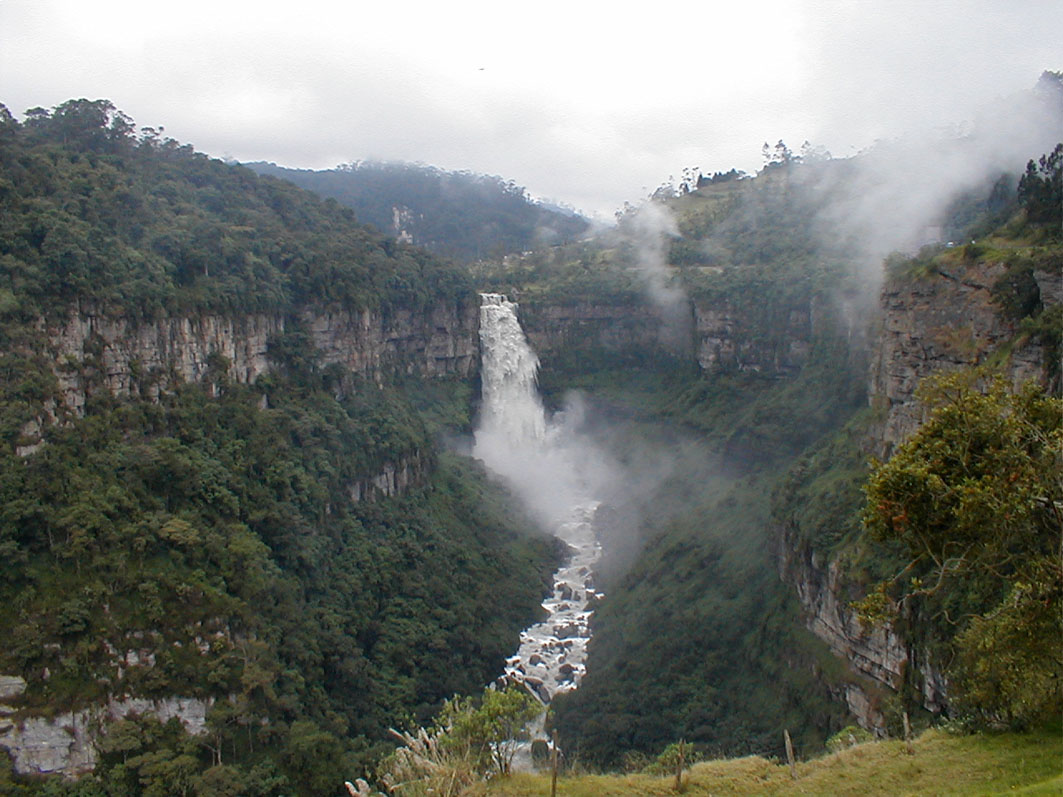Best places to visit
The places to enjoy in Bogotá are innumerable, there are many places to enjoy in the Capital, for all ages and tastes, among them are the Botanical Garden José Celestino Mutis, the Quinta de Bolivar, the national observatory, the planetarium of Bogotá, Maloka the viewpoint of the Colpatria Tower and the Mirador de La Calera, Monument Flags Americas (next to the flags of TransMilenio station) and La Candelaria, a town that is worth a Cultural and National Character. The city also has numerous parks rides as Salitre Magico Mundo Aventura and thematic sites.

Monserrate

Bolivar Square
The Bolívar Square (Spanish: Plaza de Bolívar o Plaza Bolívar) is located in the heart of the historical area of Bogotá. It has a statue of Simón Bolívar sculpted in 1846 by the Italian Pietro Tenerani, which was the first ever public monument in the city. Plaza Bolívar is also the name given to the main square in every city or town of Venezuela, the native country of Simón Bolívar.
On the Northern side of the square is the Palace of Justice, a big modern building where the Supreme Court works. The history of the Justice Palace is tragic enough and maybe symbolic of the problems of the nation. The first building was built in 1921 on the corner of the 11th and with 6th street and destroyed by a fire during the Bogotazo in April 1948. A new palace was built on the north side of the Bolívar Square and destroyed again in November 1985 by the guerrilla movement M-19 during the "Palace of Justice Siege", while the army tried to take control of the building. The ruins of the building were kept untouched for four years until the government decided to demolish them and construct the new building that currently exists.

In areas near the Laguna de Bogotá like Fúquene and Neusa Reservoir, Tominé and Sisga, are enabled for camping and water sports. Also, it is possible to camp in the Sumapaz National Natural Park, Chingaza National Park east of Bogotá.

Salt Cathedral of Zipaquirá
 The Salt Cathedral of Zipaquirá (Spanish: Catedral de Sal de Zipaquirá) is an underground Roman Catholic church built within the tunnels of a salt mine 200 meters underground in a Halite mountain near the town of Zipaquirá, in Cundinamarca, Colombia. It is a very popular tourist destination and place of pilgrimage in the country. The name "Salt Cathedral" is mostly to attract tourists - while a functioning church that receives as many as 3,000 visitors on Sundays, it has no bishop and therefore no official status as a cathedral in Catholicism.The temple at the bottom has three sections, representing the birth, life, and death of Jesus. The icons, ornaments and architectural details are hand carved in the halite rock. Some marble sculptures are included.The Salt Cathedral is considered one of the most notable achievements of Colombian architecture. Also it has been denominated as "Jewel of Modern Architecture".The cathedral represents for the Colombian people a valuable cultural, environmental and religious patrimony.
The Salt Cathedral of Zipaquirá (Spanish: Catedral de Sal de Zipaquirá) is an underground Roman Catholic church built within the tunnels of a salt mine 200 meters underground in a Halite mountain near the town of Zipaquirá, in Cundinamarca, Colombia. It is a very popular tourist destination and place of pilgrimage in the country. The name "Salt Cathedral" is mostly to attract tourists - while a functioning church that receives as many as 3,000 visitors on Sundays, it has no bishop and therefore no official status as a cathedral in Catholicism.The temple at the bottom has three sections, representing the birth, life, and death of Jesus. The icons, ornaments and architectural details are hand carved in the halite rock. Some marble sculptures are included.The Salt Cathedral is considered one of the most notable achievements of Colombian architecture. Also it has been denominated as "Jewel of Modern Architecture".The cathedral represents for the Colombian people a valuable cultural, environmental and religious patrimony.Tequendama Falls

The Tequendama Falls (Spanish: Salto del Tequendama) is a 132m high waterfall on the Bogotá River, located about 30 km southwest of Bogotá in the municipality of San Antonio del Tequendama. Established in ~10000 BCE, El Abra and Tequendama were the first permanent settlements in Colombia.[citation needed] One of the country’s major tourist attractions, the falls are located in a forested area 20 miles (32 km) west of Bogotá. The river surges through a rocky gorge that narrows to about 60 feet (18 m) at the brink of the 515-foot- (157-metre-) high falls. During the month of December the falls become completely dry. The falls, once a common site for suicides,[citation needed] may be reached by road from Bogotá.
